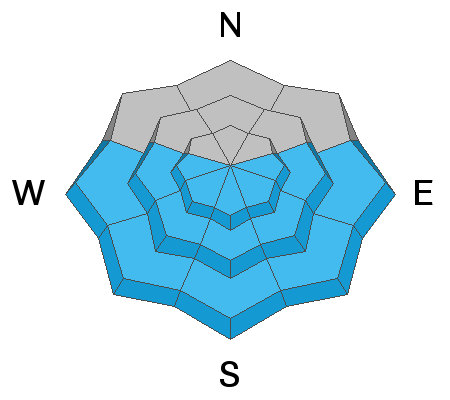Forecast for the Provo Area Mountains

Issued by Mark Staples on
Wednesday morning, March 31, 2021
Wednesday morning, March 31, 2021
The avalanche danger is LOW. By this afternoon there should be some small, wet loose avalanches that occur as the snow warms and surface layers become wet.
On slopes that remain frozen, the greatest threat is falling on the hard snow and being unable to stop.
Continue to maintain safe travel habits; this means exposing one person at a time to avalanche terrain, having someone watch them from a safe location, and not traveling above or below other parties.

Low
Moderate
Considerable
High
Extreme
Learn how to read the forecast here







